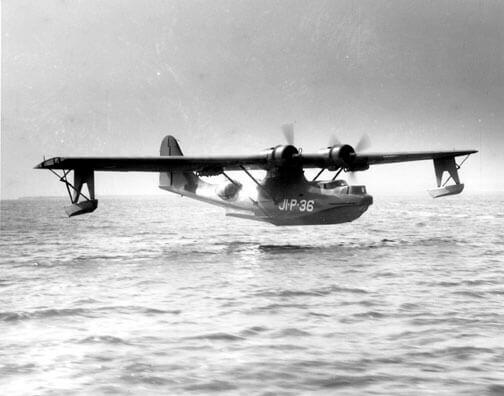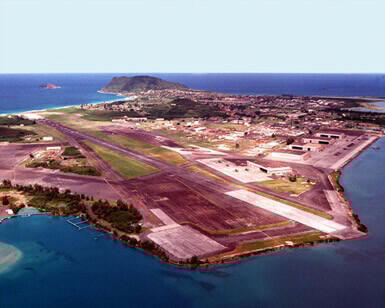Other Targets: Naval Air Station Kaneohe Bay
The targets of the Pearl Harbor attack of December 7, 1941 weren't limited to the ships at the Oahu naval base. The eight battleships moored at Battleship Row were the primary focus of the assault, but to guarantee victory, the Imperial Japanese Navy targeted multiple points across the island of Oahu. Among them, an installation a good distance away from Pearl Harbor: Naval Air Station Kaneohe Bay.
Background
Located on the eastern coast of the island, Kaneohe Bay was transferred to the United States military in 1918 by President Woodrow Wilson. Wilson signed Executive Order 2900, which established 332 acres of the peninsula that juts out into the bay as property of the Army and named the Kuwaahoe Military Reservation. The military installation became inactive after World War I when it was leased out for agricultural use.
After being reactivated in 1939, the base went through multiple name changes, eventually becoming Fort Hase. Under that name, the installation became a vital part of the Windward Coastal Artillery Command. Its location on Oahu’s coast drew the attention of the US Navy, which wanted to use part of the peninsula as a seaplane base.
Before the end of 1939, the Navy acquired 464 acres of the peninsula and stationed PBY Catalina Patrol planes there. For much of its first year, the acreage was used to launch seaplanes for long-range reconnaissance flights. The air station was expanded in 1940 when the Navy acquired all of the Mokapu Peninsula, save for the Army’s Fort Hase.
The Attack
The thriving airbase became the object of unwanted attention in 1941, when Japan launched the attack on Pearl Harbor. Even before the first bombs dropped on the ships in the harbor, Naval Air Station Kaneohe Bay came under attack. The Imperial Japanese Navy aerial striking force intentionally targeted the base in order to disable American aircraft that could have impeded the assault.
Twenty-seven of the 36 PBY Catalinas stationed at the airbase were destroyed and 18 sailors were killed by strafing machine gun fire and bombs. It was at Kaneohe that the first Japanese aircraft were shot down. The attack on Kaneohe also led to Chief Petty Officer John William Finn’s receiving one of the first Medals of Honor of World War II.
Naval Air Station Kaneohe Bay During and After the War
Though the attack left the airbase in complete disarray, it wasn't long before it was back in operation. As the Navy engaged the Japanese forces in the Pacific, Naval Air Station Kaneohe Bay served as a training base, with schools for Navy gunners, celestial navigation, aircraft recognition, and turret operations. The station remained in service until four years after the war’s end.
For three years, it sat decommissioned before the Marine Corps recommissioned it. In 1987, Naval Air Station Kaneohe Bay was listed as a National Historic Landmark and historic district. Today, Marine Corps Air Station Kaneohe Bay is a component of Marine Corps Base Hawaii.









